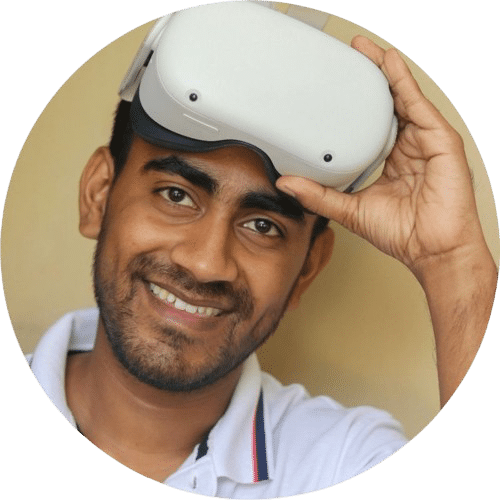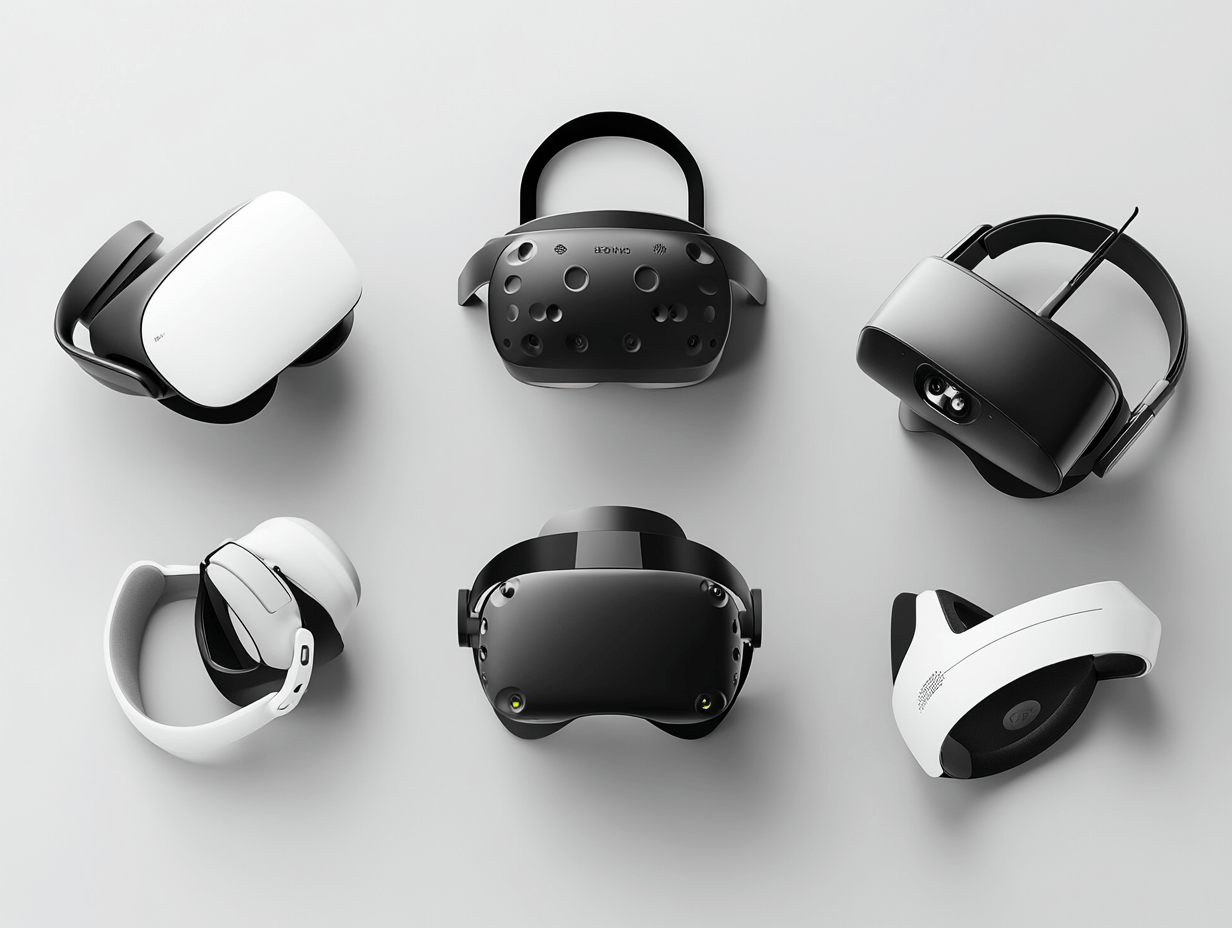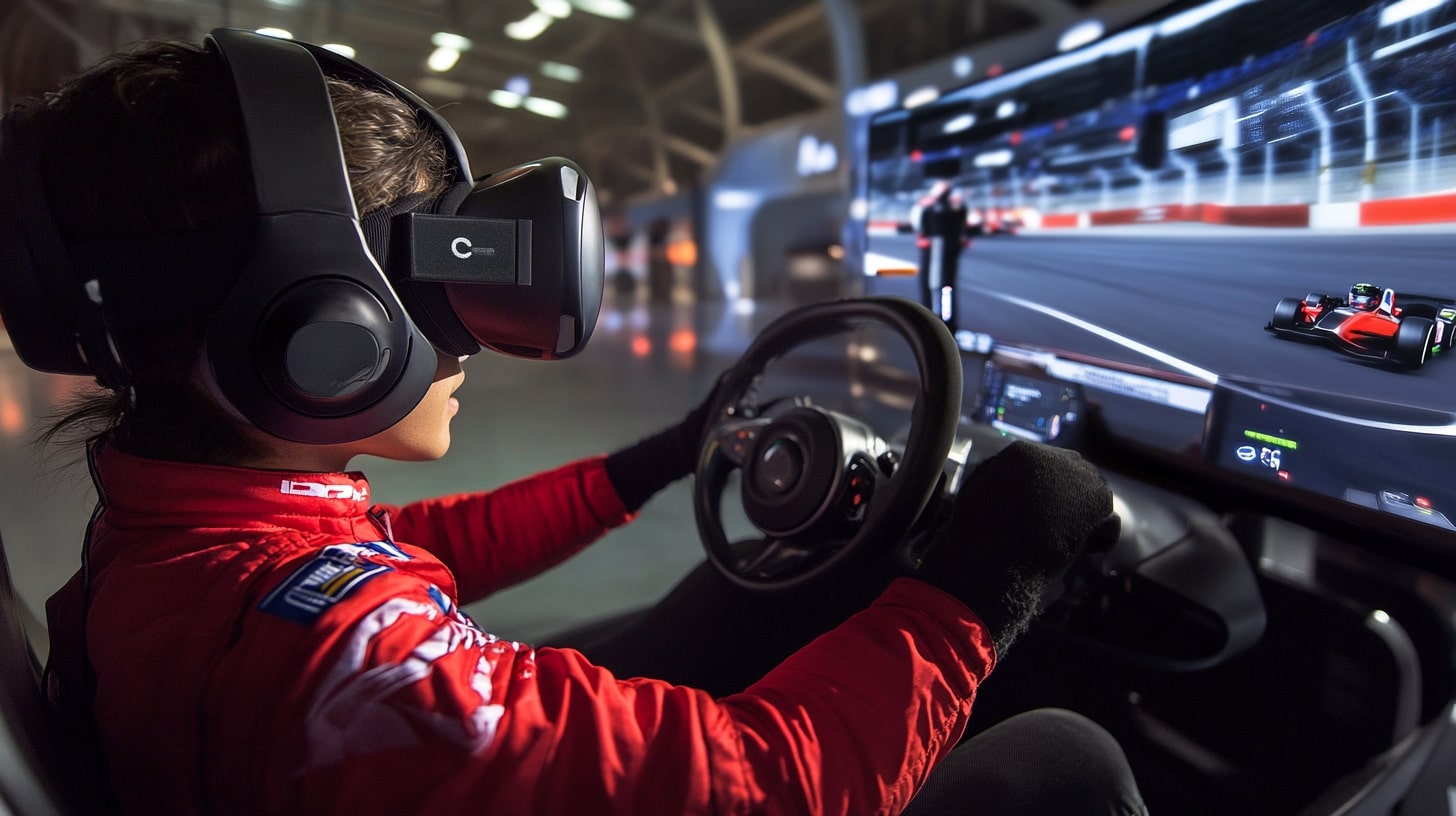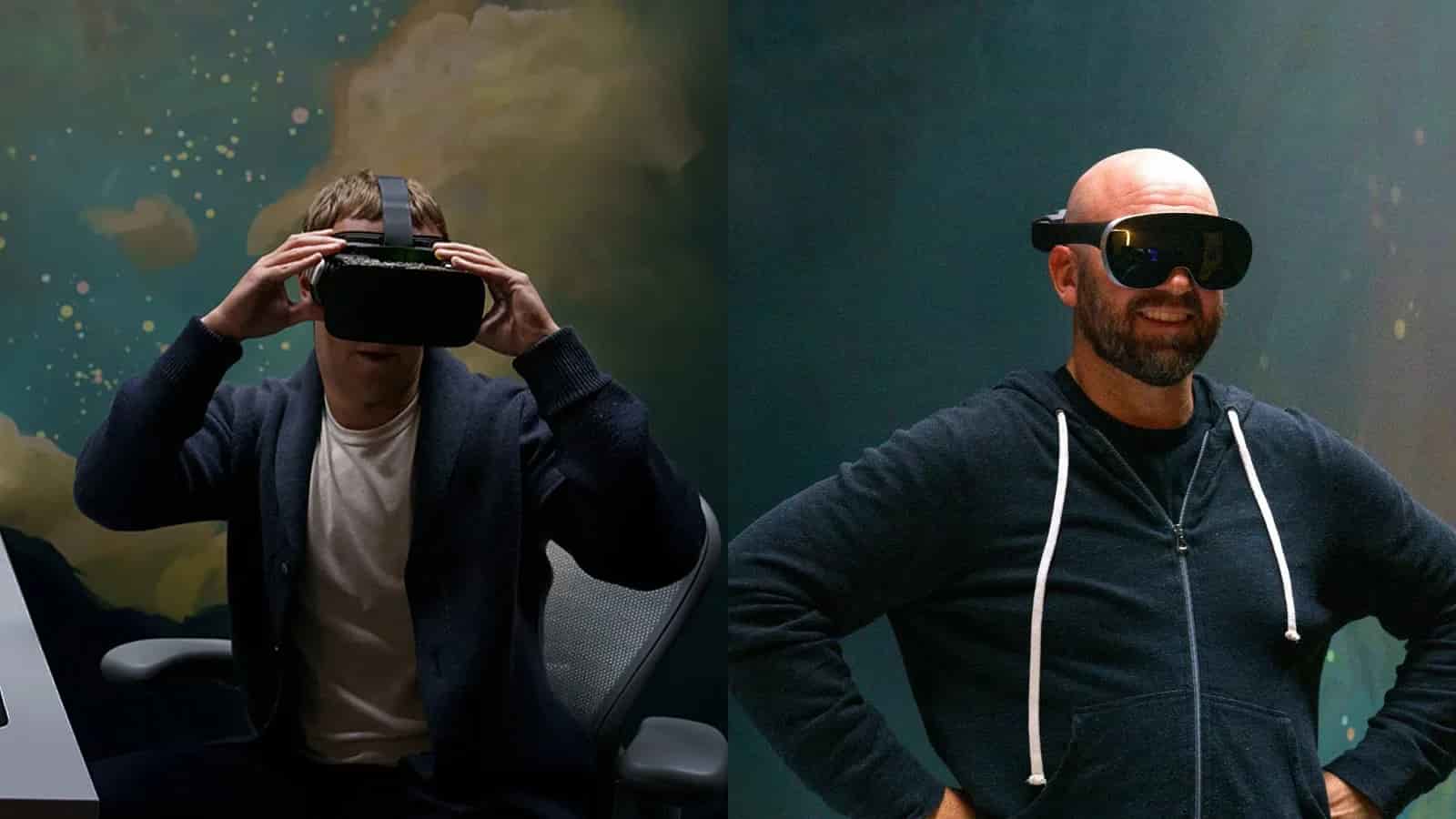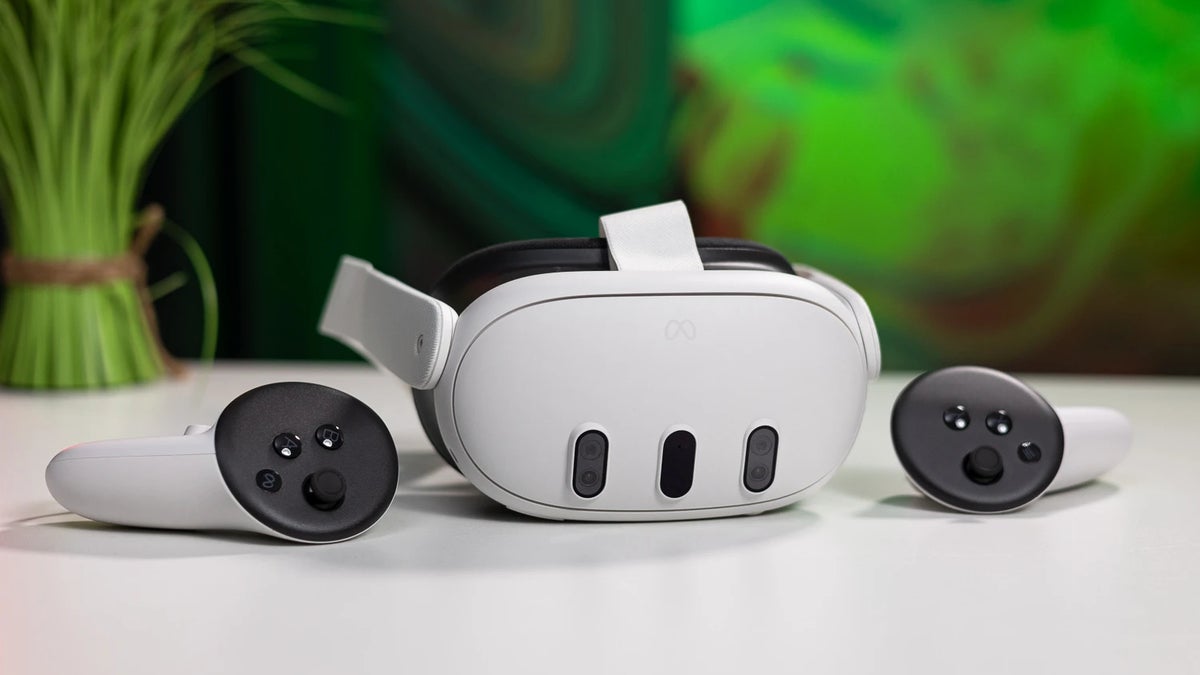Now Reading: Best Full Body Tracking VR in 2025
-
01
Best Full Body Tracking VR in 2025
As virtual reality (VR) continues to evolve, full-body tracking has become a game-changer for enhancing immersion and interactivity.
Whether you’re a casual gamer, a VRChat enthusiast, or a professional using VR for motion capture, VR trackers allow you to bring your entire body into the virtual world.
Finding best vr headset is challening as finding good vr trackers.
These devices track movements like walking, dancing, or gestures, adding realism and functionality to VR experiences.
In this article, we’ll explore the most popular VR trackers, their features, compatible headsets, and where you can purchase them.
What is Full-Body Tracking in VR?
Full-body tracking allows your real-world movements to be accurately reflected in virtual reality.
This is typically achieved using external sensors, trackers, or motion capture suits. With advanced tracking, users can experience a heightened sense of immersion, enabling activities like dancing, fitness training, or professional motion capture in VR.
Quick Picks: Best Full Body Tracking VR in 2025
In Detail: Full Body VR tracker

HTC Vive Tracker 3.0
HTC Vive Trackers are among the most popular options for full-body tracking.
They attach to different parts of your body (e.g., feet, hips) or physical objects, translating real-world movements into VR.
Ideal for VRChat, fitness apps, and motion capture.
Key Features
- Small and lightweight design.
- Works with SteamVR Lighthouse base stations.
Compatible VR Headset
- Valve Index
- HTC Vive and Vive Pro Series
- Pimax Series
- Meta Quest (via PC VR)

Tundra Tracker
Tundra Trackers are compact, efficient alternatives to Vive Trackers.
They offer similar precision in tracking with improved battery life and a smaller form factor.
Perfect for extended VR sessions.
- Compact and lightweight design.
- Improved battery life compared to Vive Trackers.
Key Features
Compatible VR Headset
- Valve Index
- HTC Vive and Vive Pro Series
- Pimax Series
- Meta Quest (via PC VR)
SlimeVR Tracker
SlimeVR is an affordable, open-source option for full-body tracking.
Using IMU sensors, it doesn’t require external base stations, making it highly portable and budget-friendly.
Key Features
- Wireless, IMU-based tracking.
- Open-source software and customizable setup.
Compatible VR Headset
- Meta Quest (via PC VR)
- Valve Index
- HTC Vive Series
VIVE Ultimate Tracker
The VIVE Ultimate Tracker is a cutting-edge device designed for both standalone and PC VR use.
It eliminates the need for base stations by using inside-out tracking technology.
Key Features
- No external base stations required.
- Advanced inside-out tracking.
Compatible VR Headset
- VIVE Focus 3
- VIVE XR Elite
- Third-party SteamVR headsets

Sony Mocopi Tracker
The Sony Mocopi Tracker is a portable, lightweight, and wireless motion capture system designed to make full-body tracking more accessible.
With six compact trackers (for the head, wrists, hips, and ankles), it enables real-time motion tracking for VR experiences, motion capture projects, and creative applications.
It’s ideal for content creators, VTubers, and casual VR users who need a streamlined, easy-to-use solution.
Key Features
- Wireless Design
- Lightweight and Compact
- Cross-Platform Support
- Battery-Powered
- Simple calibration process via the Mocopi app, making it beginner-friendly.
Compatible VR Headset
- Sony PlayStation VR 2
- Meta Quest (via PC VR or middleware)
- Valve Index, HTC Vive, and Other SteamVR Headsets
Full-body tracking elevates your VR experience by immersing your entire body into the digital realm.
Whether you’re a casual player or a professional creator, there’s a VR tracker for your needs.
Choose based on your budget, desired accuracy, and the VR headset you own.
Let me know if you’d like to refine this article further or need help adding any specific details!
How Full Body Tracking works with Meta Quest 2 and Meta Quest 3
These VR Trackers works with Meta Quest Devices
- Setup Process:
- Attach sensors to your torso, hips, legs, and arms.
- Connect them to your PC running SteamVR.
- Use the Oculus Link or Air Link to connect your Quest 2 to your PC.
- Pros:
- Affordable.
- Wireless, no external base stations required.
- Cons:
- Less precise compared to SteamVR Lighthouse-based systems.

- SteamVR-compatible trackers that offer precise full-body tracking using Lighthouse base stations.
- Setup Process:
- Purchase Vive Trackers and base stations.
- Set up the base stations in your room.
- Connect the Quest 2 to your PC using Oculus Link or Air Link.
- Use software like OpenVR Space Calibrator to align SteamVR tracking with your Quest 2.
- Pros:
- High precision.
- Versatile for gaming and motion capture.
- Cons:
- Expensive.
- Requires additional hardware (base stations and trackers).

- A compact and wireless motion tracking system that connects to your PC or smartphone via Bluetooth.
- Setup Process:
- Wear the six trackers on your head, wrists, hips, and ankles.
- Use the Mocopi app to set up and calibrate tracking.
- Connect your Quest 2 to SteamVR via Oculus Link or Air Link for integration.
- Pros:
- Completely wireless.
- Easy to set up and portable.
- Cons:
- Lower precision compared to Lighthouse-based trackers.
- Limited compatibility with some VR software.
How to Choose the Right Full-Body Tracking System
Choosing the right VR tracker depends on your needs. If you want casual full-body tracking for social VR, HTC Vive Tracker, vive ultimate or Tundra Tracker is your best bet.
For budget-friendly solutions, SlimeVR is an excellent alternative.
If you’re interested in standalone VR experiences, check out our comparison of Standalone vs PC-Powered VR Headsets to find the right ecosystem for you.
The Future of Full-Body VR Tracking
As technology advances, full-body tracking is becoming more accessible and accurate.
Upcoming VR headsets are integrating inside-out tracking solutions that reduce the need for external sensors. If you’re excited about what’s next, explore our list of Upcoming VR Headsets and stay ahead of the curve.
Different Types of VR Tracking Technologies
- Optical Tracking: Uses external cameras to track movement (e.g., HTC Vive base stations).
- Inertial Tracking: Uses IMUs (Inertial Measurement Units) to detect motion without external sensors (e.g., SlimeVR).
- Inside-Out Tracking: Uses cameras on the headset or controllers to track movement (e.g., Meta Quest Pro controllers).
- Hybrid Tracking: Combines multiple tracking methods for enhanced accuracy (e.g., Mocopi sensors + inside-out tracking).
Comparison of Wired vs. Wireless Tracking Systems
- Wired Tracking: Higher accuracy but restricted movement due to cables (common in professional motion capture suits).
- Wireless Tracking: More freedom but potential latency issues (e.g., SlimeVR, Tundra Tracker).
- Best Use Case: Wireless tracking is ideal for gaming and social VR, while wired tracking is preferred for precise motion capture.
Applications Beyond Gaming
- Medical Training & Rehabilitation: Full-body tracking is used for physiotherapy, posture correction, and movement rehabilitation.
- Virtual Production & Film Industry: Motion capture suits like Rokoko SmartSuit are used for CGI character animation.
- Sports Training & Analysis: Athletes use VR tracking to analyze movements and improve performance.
- Workplace Training: Industries like construction and manufacturing use VR tracking for safety and workflow training.
Best Practices for Full-Body Tracking Setup
- Ideal Room Conditions: Ensure good lighting, minimal reflections, and an open space to avoid occlusion issues.
- Tracker Placement Tips: Position trackers symmetrically on feet, waist, and torso for accurate tracking.
- Regular Calibration: Proper calibration ensures minimal drift and optimal tracking performance.
- Using Multiple Base Stations: If using SteamVR tracking, placing base stations at different angles reduces blind spots.
Common Issues and Troubleshooting Tips
- Drifting or Misalignment: Happens with IMU-based trackers like SlimeVR; regular recalibration is required.
- Controller or Tracker Not Detected: Check USB connections, firmware updates, and SteamVR settings.
- Tracking Interference: Avoid reflective surfaces and wireless signal interference to improve accuracy.
Future Innovations in Full-Body Tracking
- AI-Assisted Motion Prediction: Enhances tracking accuracy by predicting movement patterns.
- Haptic Feedback Integration: Upcoming trackers may include haptic feedback to simulate touch sensations.
- Sensor Miniaturization: Smaller, lightweight sensors will make full-body tracking more comfortable.
- Cloud-Based Motion Capture: Real-time motion tracking stored in the cloud for animation and remote collaboration.
Best Accessories for Enhancing Full-Body VR Tracking
- VR Tracker Straps: Secure trackers in place for better accuracy (e.g., Rebuff Reality straps for Vive trackers).
- Additional Base Stations: Improves tracking coverage, reducing occlusion issues in large VR setups.
- Extended Battery Packs: Useful for longer VR sessions when using wireless tracking systems.
- Protective Covers: Prevents wear and tear on expensive tracking hardware.
User Reviews and Testimonials on Full-Body Tracking
- VRChat Users: Many prefer Vive Trackers and Tundra Tracker for stable tracking.
- Fitness Enthusiasts: SlimeVR is popular for VR workouts due to its affordability and wireless design.
- Game Developers: Rokoko suits are widely used in indie and AAA game development for motion capture.
- Content Creators & Streamers: Full-body tracking enhances VR streams with more dynamic avatars and interactions.
Integrating Full-Body Tracking with Other VR Technologies
- VR Gloves: Combined with full-body tracking for realistic hand interactions.
- Treadmills & Haptic Suits: Used in enterprise and military training for a fully immersive experience.
- Eye-Tracking & Facial Tracking: Enhances social VR by capturing expressions and gaze movements.
- Mixed Reality (MR) Integration: Combining VR tracking with real-world environments for hybrid experiences.
Market Trends and Predictions for Full-Body Tracking
Growth in Consumer VR Tracking: More affordable and accessible tracking systems are expected.
Increased Adoption in Enterprise & Medical Fields: More use in professional training and rehabilitation.
Standalone VR Headsets with Built-in Full-Body Tracking: Future VR headsets may integrate full-body tracking without extra accessories.
Subscription-Based VR Tracking Services: Companies may offer cloud-based tracking solutions for remote collaboration and training.
Conclusion
As technology advances, full-body tracking is becoming more accessible and accurate
Full-body tracking is a game-changer for VR enthusiasts, offering greater immersion and interaction in virtual environments.
Whether you’re a social VR user, a fitness enthusiast, or a professional in motion capture, there’s a tracking solution for you. For more insights on how VR technology has evolved over time, check out The Evolution of VR Headset Technology.
For additional insights into VR tracking and motion capture, check out this in-depth guide from IEEE, covering the latest advancements in VR tracking technologies.
Let's Check Some Hot Questions
What are some cheapest full body tracking VR
Cheapest full body tracking VR
– HTC Vive Tracker 3.0
– Tundra Tracker
– Vive Ultimate Tracker
vrChat Full Body Tracking : What are best VR Trackers ?
- Vive Trackers (SteamVR)
- Tundra Trackers (SteamVR)
- SlimeVR
- Sony Mocopi
Related Posts
Previous Post
Next Post
Recent Posts
- vision pro updates 2025: Latest visionOS Features, App News & More
- Dopple’s Loop: Etsy Co-founder’s Bold Entry into XR with a Wearable Spatial Device
- Apple May Bring Controller Support to Vision Pro: A Game-Changer for Immersive VR
- Slime Lab VR: Liquid Physics Playground for Quest 3 & SteamVR
- Top 5 meta quest gun controller


